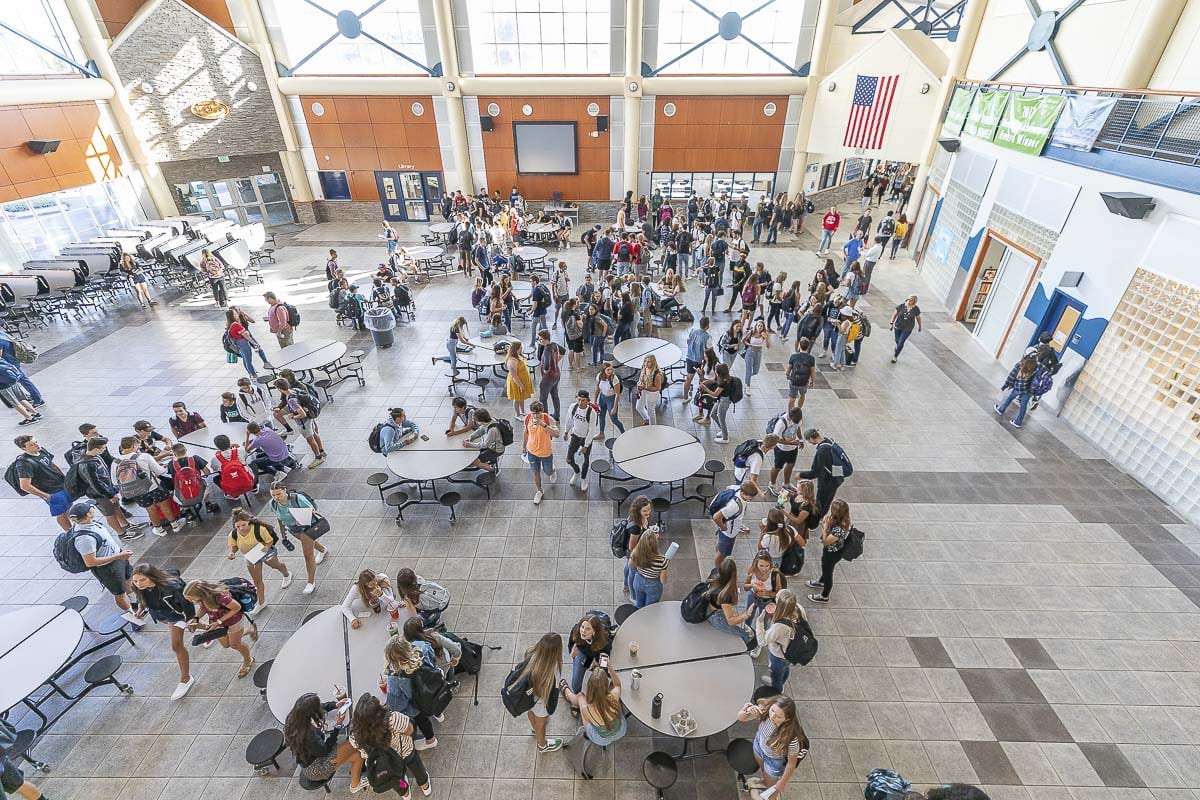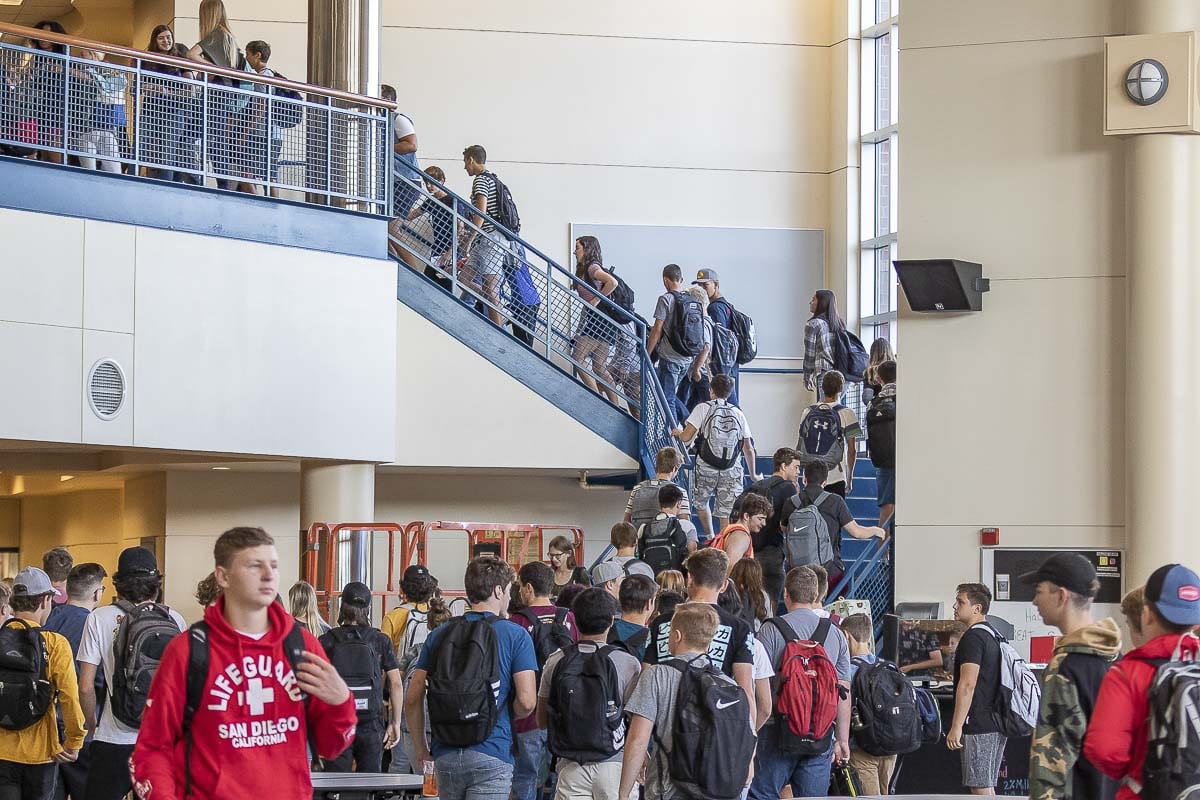Area educators have concerns on feasibility of safely reopening in-person learning for fall 2020
CLARK COUNTY — Another, much more center-stage, factor has emerged in the struggle to understand the novel coronavirus, and it’s all about ventilation.
On June 15, New York Times (NYT) reporter Donald McNeil Jr., who has covered pandemics for decades, explained that what the U.S. and the world is learning is that COVID-19 can be caused by aerosol transmission of droplets hanging in the air for hours. Even with masks.
Now, as Washington state public schools, and schools here in Clark County strategize on how to safely reopen in the fall of 2020, air flow and strong circulation of fresh air is becoming a point of disagreement.

On June 20, the Washington Office of Superintendent of Public Instruction (OSPI) and state Superintendent Chris Reykdal, released a video explaining expectations for school districts. Among other things, he stated that many activities of students moving around and using school supplies would happen as normal.
“What makes this tolerable in the world of public health is that we have other metrics that we’re using, other measures,” Reykdal said. “We’re wearing our face coverings, we’re washing our hands, we’re frequently cleaning, we have good ventilation in our schools, and it’s a short duration, these contexts that are within six feet.”
Specifically, the comment regarding ventilation has created the aforementioned disagreement. In many cases on Facebook, educators across the state and across the county have refuted Reykdal’s statement, citing their own experiences with the opposite.
Radon and asbestos, poor air flow, unclean water stations, lead, unreliable HVAC systems, no opening windows and a lack of funding to remedy such issues are among the reasons cited.
“The State Superintendent must acknowledge the deplorable conditions public school facilities are in,” said former Heritage High School teacher Adam Aguilera in a video version of a letter he wrote to OSPI and Gov. Jay Inslee. “Our facilities are inadequate in providing proper ventilation or spacing to safely reopen buildings … Students and educators will face a lottery of inequity where losers will randomly be scheduled into rooms and buildings that disproportionately endanger the health of students and staff from marginalized communities, particularly ones of color.”
These concerns have surfaced recently, in addition to the extensive apprehension by many area educators to successfully police face coverings and physical distancing with students throughout the school day. This is especially compounded when dealing with elementary schools with ventilation challenges.
Carmela Lemon and Jenni Bradley are both first grade teachers within the Evergreen School District in Vancouver. Lemon, who teaches at Mill Plain Elementary, has experienced first hand potentially hazardous conditions within a school building.
“We have gotten communication that our building has had lead, radon, and asbestos,” Lemon said. “Every now and then they will come in and set this little box on my counter, and it’s to detect levels and make sure that the levels are, I guess, safe. We’ve done some renovation but our school is very old. I have no windows that I can open and I’ve never opened windows in my classroom.”
Lemon has taught for the last eight years, and Bradley, who has taught for over 12, explained that they fear trying to enforce masks and social distancing will be an exercise in futility for two reasons: it’s difficult to keep 6-year-olds from messing with each other, and if the ventilation is faulty it won’t make a difference anyway.

At Crestline Elementary School where Bradley teaches her first grade class, the building may be much newer, but the complex technology has its own dark side.
“It’s a brand new, beautiful building, top notch, brand new everything. And we still have almost weekly issues with the heating and cooling in the HVAC systems,” Bradley said. “This last school year, in particular, it was a pretty regular problem where the upstairs classrooms would be, you know, at 85 degrees. The downstairs classrooms we’re very uncomfortably cold.”
Newer HVAC systems in many U.S. schools have very specific requirements per the Environmental Protection Agency (EPA). In many cases, energy efficiency is one of those; the ability to recirculate air to save money and power usage.
When it comes to COVID-19 droplets, getting them as far from people as possible is the common goal across the nation. In his NYT reporting, McNeil Jr. even suggested removing windows from public transit in large cities for the same reason.
“They’re not designed to draw in a lot of outside fresh air, because that’s less energy efficient,” Bradley said. “They’re created for energy efficiency, which is great. It’s just not great when we’re in an airborne pandemic.”
Bradley also explained her apprehension in strictly enforcing masks and physical distancing in her classroom. After measuring the space several times, she concluded it would be impossible to have even most of her students there and still six feet apart.
Lemon explained that after returning from their recess in September, her students are usually very hot, tired and thirsty. She has a hard time believing young students in such a state would keep their masks on or be careful at the drinking fountains.
OSPI has not yet solidified all elements of its requirements and recommendations for the coming school year. Aguilera and other educators have posed the question about why a plan is being made at all, since COVID-19 case numbers are much higher than on the initial school closing date of March 13, and are only rising rapidly.
Distance Learning 2.0, as it is called by many, is being put forward as an alternative option. Even though many teachers, including Lemon and Bradley, have said they are no fan of it compared to in person, they said they feel it is better to be safe than sorry.
“I really wish that the entire community would rally around the learning community, rather than sacrifice the learning community,” Lemon said. “Don’t complain about not being able to use us. Ask, ‘How can we be used? How can we help make sure learning still takes place, but everyone is safe and no one has to choose between living or learning?’”




